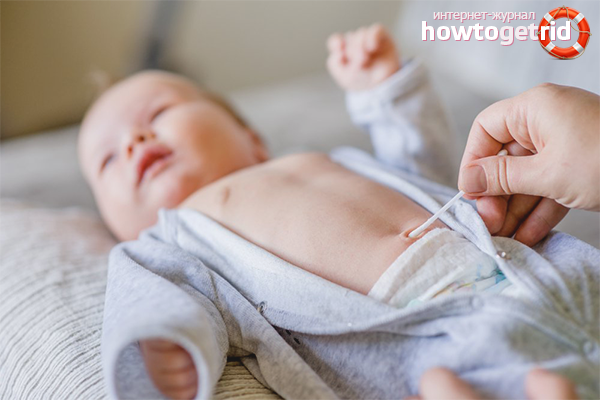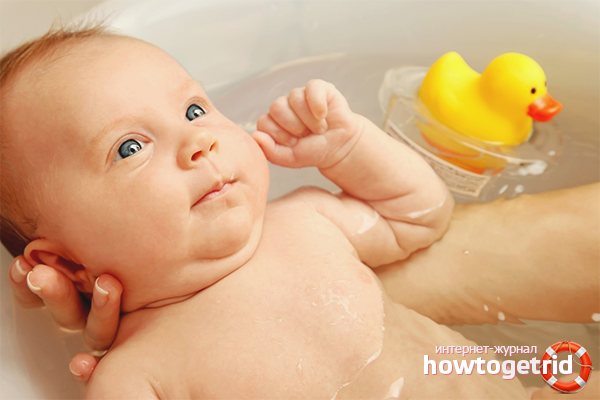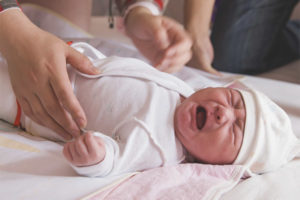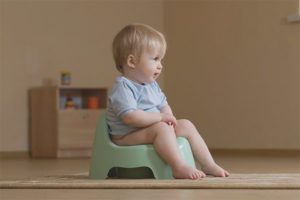The content of the article
If you are an experienced mother with one child and knowledge of how to care for a newborn, you can easily treat the umbilical wound. But if you are a first-born who sees a tiny baby for the first time, you will not be in danger of knowing about caring for a newborn's navel.
Through the navel, the baby receives all the elements he needs for nutrition - oxygen, vitamins, minerals. The navel is his artery of life. After birth, the placenta can no longer feed the baby and the navel needs to be cut. Now the baby will receive all the necessary things from the outside world. The large vital canal in the form of a navel is cut, with time the wound heals and falls off. At such moments, you need to be as careful as possible. An open, unhealed navel is the gateway to infection right inside the body. It needs to be protected and processed. At the same time, excessive friction and constant procedures often cause prolonged bleeding of the umbilical wound. So what to do, how to find this optimal balance? How to care for the navel of a newborn, let's try to figure it out.
How to care for a navel with a clothespin
As a rule, until the clothespin falls off, the navel does not require special care. You just have to observe two rules - cleanliness and dryness. The navel of the child should not come into contact with dirty and even more so, infected objects and things. All clothing should be ironed. Put on the baby a special diaper, which has a hole for the navel. If there is no such diaper, you can simply wrap the diaper on top so that it does not block the access of fresh air to the wound. Under these conditions, the clothespin will fall off much faster. And in place of it, an umbilical wound is formed, which requires special care.
How to handle a newborn's navel
It is necessary to process the umbilical wound 1-2 times a day. It is better to do this in the morning and evening, after water procedures. To do this, you will need hydrogen peroxide, chlorophyllipt (or another antiseptic), cotton buds, cotton wool, pipette.
- Rinse hands thoroughly before handling. Put the baby on the changing table and drop a few drops of hydrogen peroxide into a navel with a pipette. Bubbles will appear, hissing will begin - this is normal.
- After 5 minutes, when the peroxide soaks the frozen crusts, carefully using a cotton swab, you can remove all unnecessary from the navel - crusts and particles of gore. Clean only the surface of the navel, you can not go too deep - so you slow down the healing process.
- After that, treat the wound with chlorophyllipt (you can use any other antiseptics) and leave the navel for a while in the open air.
- Do not treat the wound with brilliant green or potassium permanganate. The vibrant color of these compounds may mask possible inflammation and redness.
Treat the navel in such a way that it will heal in a few days. How to understand that the navel has healed? It will cease to bleed, the anemone will no longer stand out from it, peroxide will cease to foam. After healing, the wound must be treated for a couple of days for prevention.
Is it possible to bathe a child if the navel has not healed?
This question is of concern to many newly minted parents. You can bathe a child, but for this you need to use clean water - there is a high probability of infection through an open wound. Therefore, water must first be boiled. Boil water for at least 10 minutes, after which the liquid cools and is poured into the bath. Check the temperature of the water with a thermometer - it should be about 37 degrees.
Dilute a small amount of potassium permanganate in a glass in advance. Potassium permanganate will disinfect water and protect the baby with an unhealed belly button from possible microbes. Before pouring the solution into the bath, strain it through several layers of gauze so that insoluble particles of small crystals do not burn the skin. Bathing water should have a slightly pinkish tint.
You need to start bathing your child with short periods of time. Wrap the baby in a diaper and lower the baby in the bath - from the legs to the middle of the chest. The first bathing does not need to be accompanied by soap and a washcloth - just rinse the baby. Bathing is very beneficial for the baby - it acts on the skin and improves blood circulation. After water procedures, treat the umbilical cord and let it dry well. After healing the navel, bathing water can not be boiled.
What to do if the navel does not heal
If the navel does not heal for more than 10 days, this is an occasion to see a doctor. Also, a pediatrician should be consulted if the navel turns red and swollen. If the child begins to cry when touching the inflamed area of the skin, this means that the skin in this place is painful. Most likely, the wound was infected and bacteria got inside. In such a situation, you should show the child to the doctor as soon as possible. In what other cases, the navel may not heal for a long time?
- Excessive hygiene. If the young mother too often processes and "picks" the navel, this may cause the wound to continue to bleed. Do treatments less frequently and less intensively. Unless, of course, in the wound site there is no redness or swelling.
- Large diameter umbilical cord. In this case, you should not worry - just the navel of your baby is a little more, and it will heal longer.
- Prematurity. Babies born prematurely are not mature enough, and their body cannot quickly deal with such a serious wound. They also need more time.
- Hernia. You can determine the umbilical hernia by a noticeable protrusion of the navel. In this case, you need to consult a pediatrician and surgeon. With proper treatment, the development of hernia and surgery can be avoided.
- Inflammatory processes. If the baby's navel becomes wet, does not heal and turns red, most likely, inflammatory processes began there. Fungus is a pink seal at the bottom of the navel, which is accompanied by redness of the skin around. Omphalitis is an inflammation of the umbilical wound if bacteria get there. It occurs due to insufficient hygiene and lack of processing. Fistula occurs if the choleretic and diuretic ducts do not close at the time of birth. In this case, fluid is released through the navel, the wound is wet all the time. A characteristic feature of the fistula is the unpleasant smell from the wound. It is imperative to see a doctor.
These are the most common reasons why the navel may not heal for a long time.
The navel of a child is that invisible thread that connects it with its mother. This is the first wound in life and the first deep scar on the body. An interesting fact is that the navel shape is independent of genes and has its own unique pattern. Caring for your belly button is a very important step at the beginning of your motherhood. The speed of healing of the navel depends only on your knowledge and common sense.
Video: how best to handle a newborn's navel











Submit